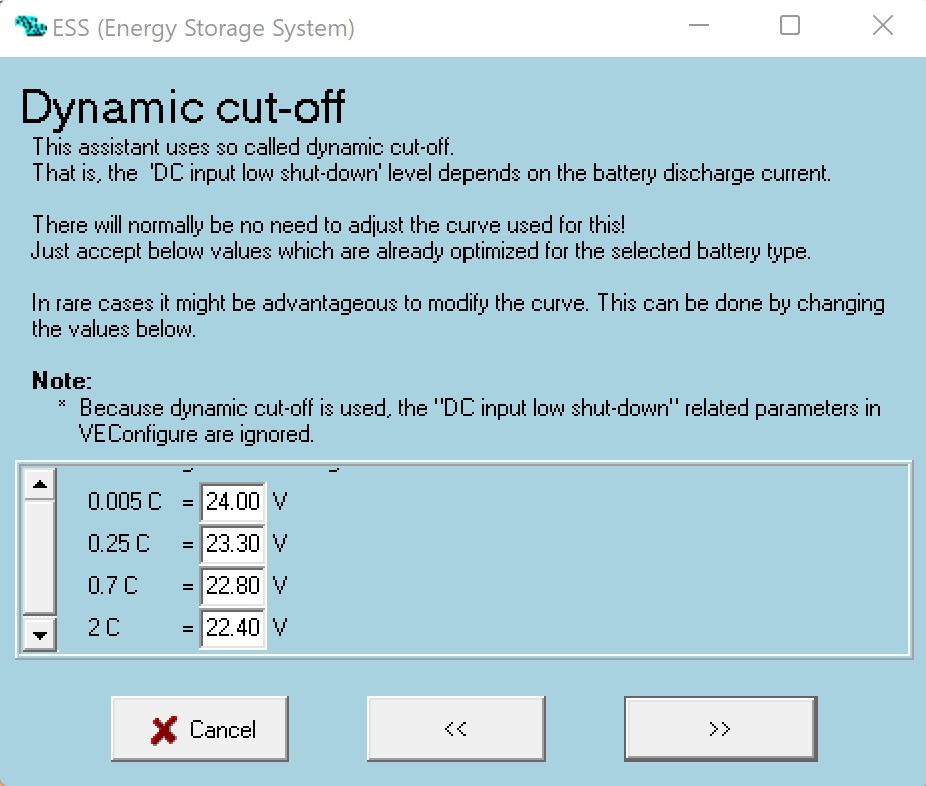Hi all,
Grid parallel ESS
Cerbo GX with ESS with DVCC
MultiPlus ii
SmartShunt
2x MPPT 100/30
24V battery bank (8x 6V FLA in series/parallel)
My ESS is going into Sustain far too early, when the batteries are only at c. 90% SoC. I have it configured as Optimised with Battery Life.
I believe that the reason for this is the values configured for the Dynamic Cut Off, however I am using the ESS default values for Gel/AGM batteries, as I believe this is the closest battery type to my FLA. I am seeing the system enter sustain mode at 23.99V, and therefore my batteries are not discharging significantly (minimum SoC set to 50%). I believe I should be able to take the batteries down to 23.00V without any issue or risk of damage.
Could anyone guide me further on this or help me optimise my settings please? I'm not sure that my dynamic cut off values are appropriate for FLA batteries, but can't find any documentation or guidance on this anywhere.

